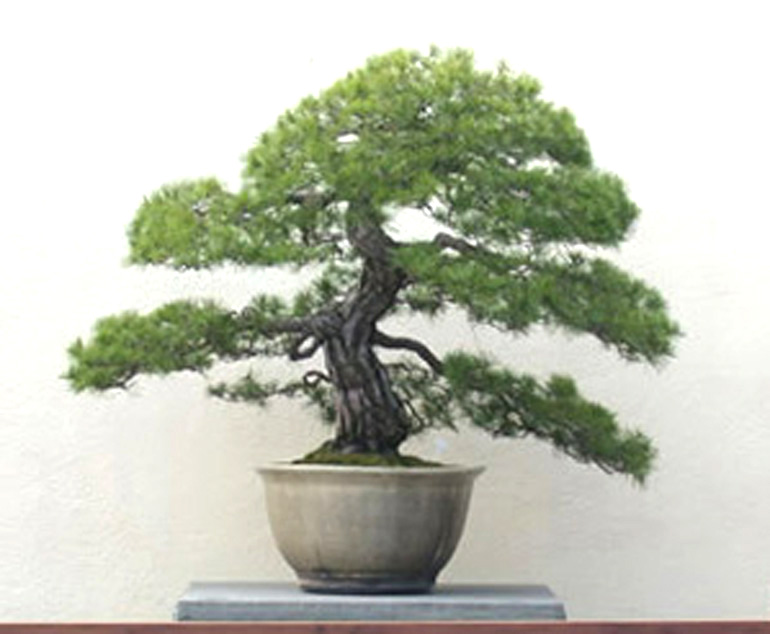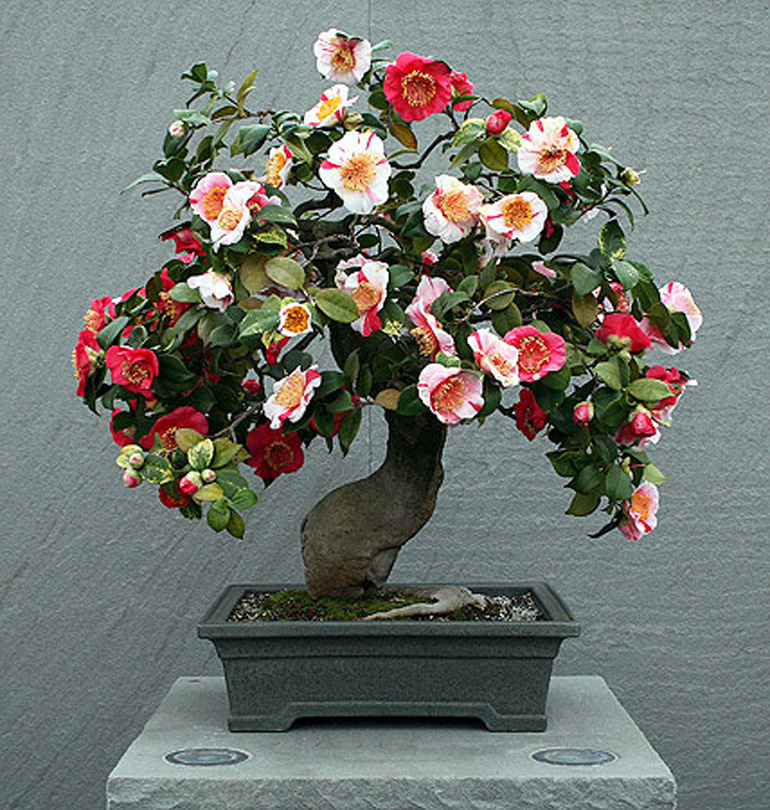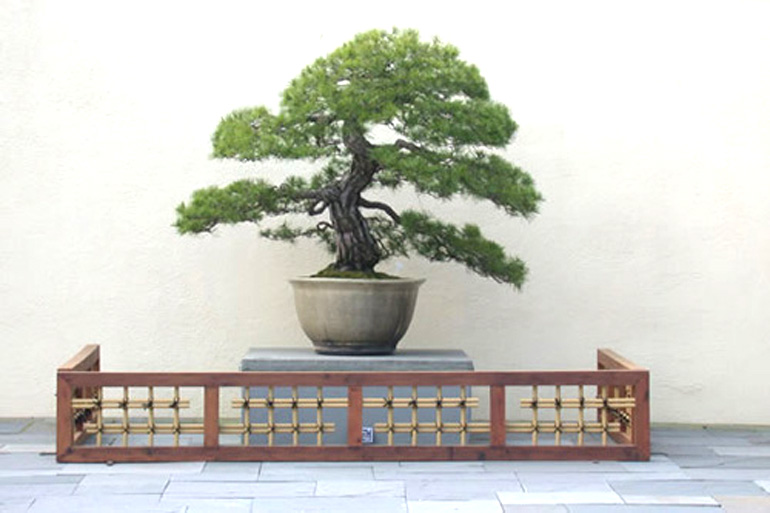
Here it is. It's a Pinus densiflora (Japanese Red Pine) that was donated to the U.S. National Bonsai and Penjing Museum by The Imperial Household of Japan. It has been in training since 1795. My apologies for the fuzz. I cropped the original photo (from 2010, see below) for a closer look at the texture on the trunk
The Japanese Collection. It’s right here in North America and it’s one of the best bonsai collections outside of Japan. Here’s an excerpt from the National Bonsai and Penjing Museum’s website... “The Japanese Collection began with the gift of 53 bonsai from Japan on the occasion of the American Bicentennial in 1976. The trees, which were from private collections, were selected by the Nippon Bonsai Association with financial assistance given by the Japan Foundation.”
Continued below…

Not 1795, but not exactly yesterday either. This striking Japanese Camellia (Camellia japonica 'Higo') with its full display of remarkable flowers has been in training since 1875. It was donated by the Kyushu Branch of the Nippon Bonsai Growers Cooperative.
Continued from above…
Does the reverse taper on the camellia above jump out at you? When it comes to flowering bonsai, Japanese growers don’t seem to mind features that would be considered flaws in non-flowering bonsai. As long as the flowers themselves are beautiful and well displayed, much is forgiven.
Continued below…
This old Japanese Black Pine was donated by Saichi Suzuki. It has been in training since 1895.
Continued from above…
Quarantined. Due to FDA rules, all the bonsai in this collection spent a year in quarantine before they could be displayed.

The original photo of the Imperial red pine.

